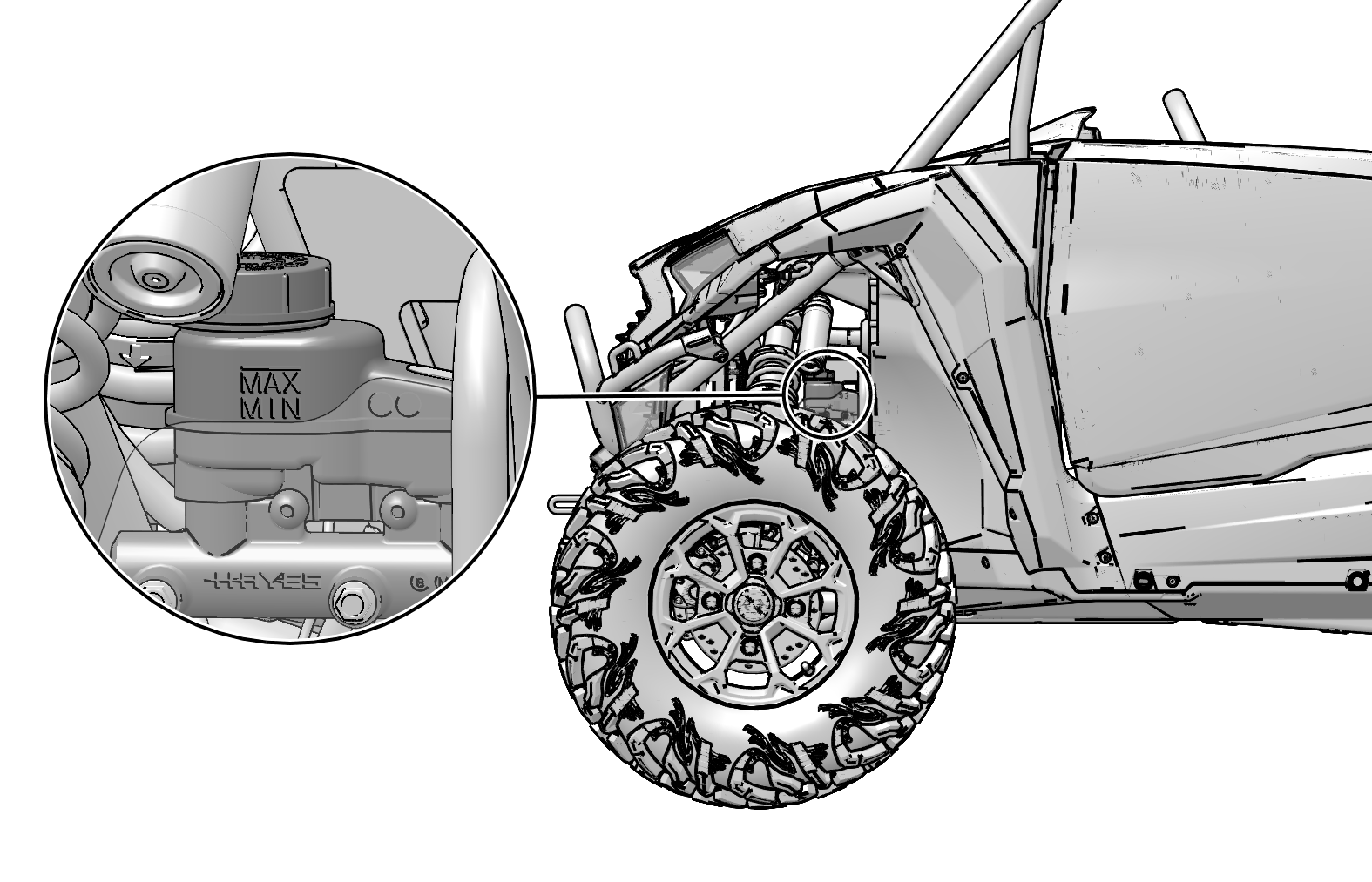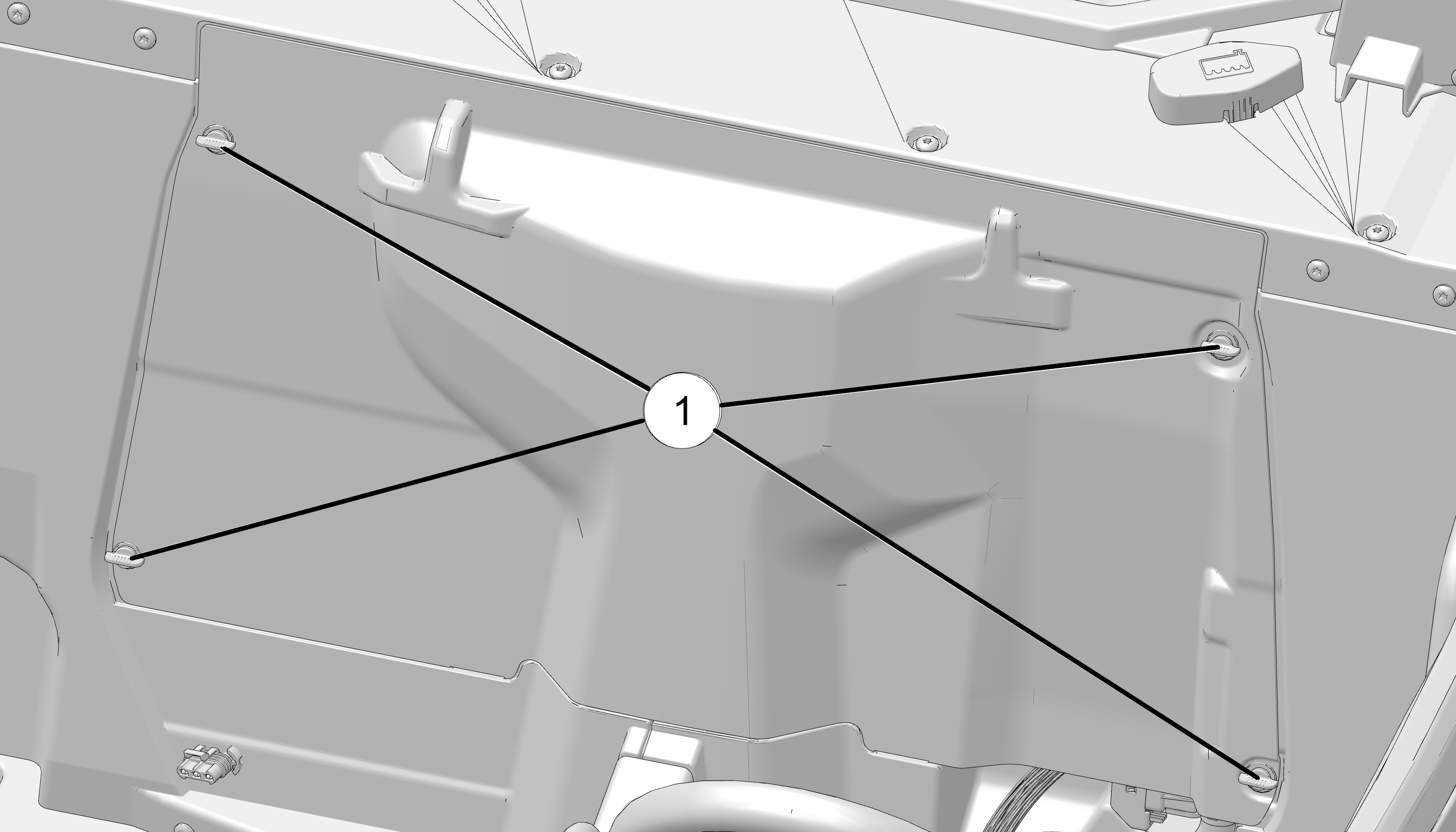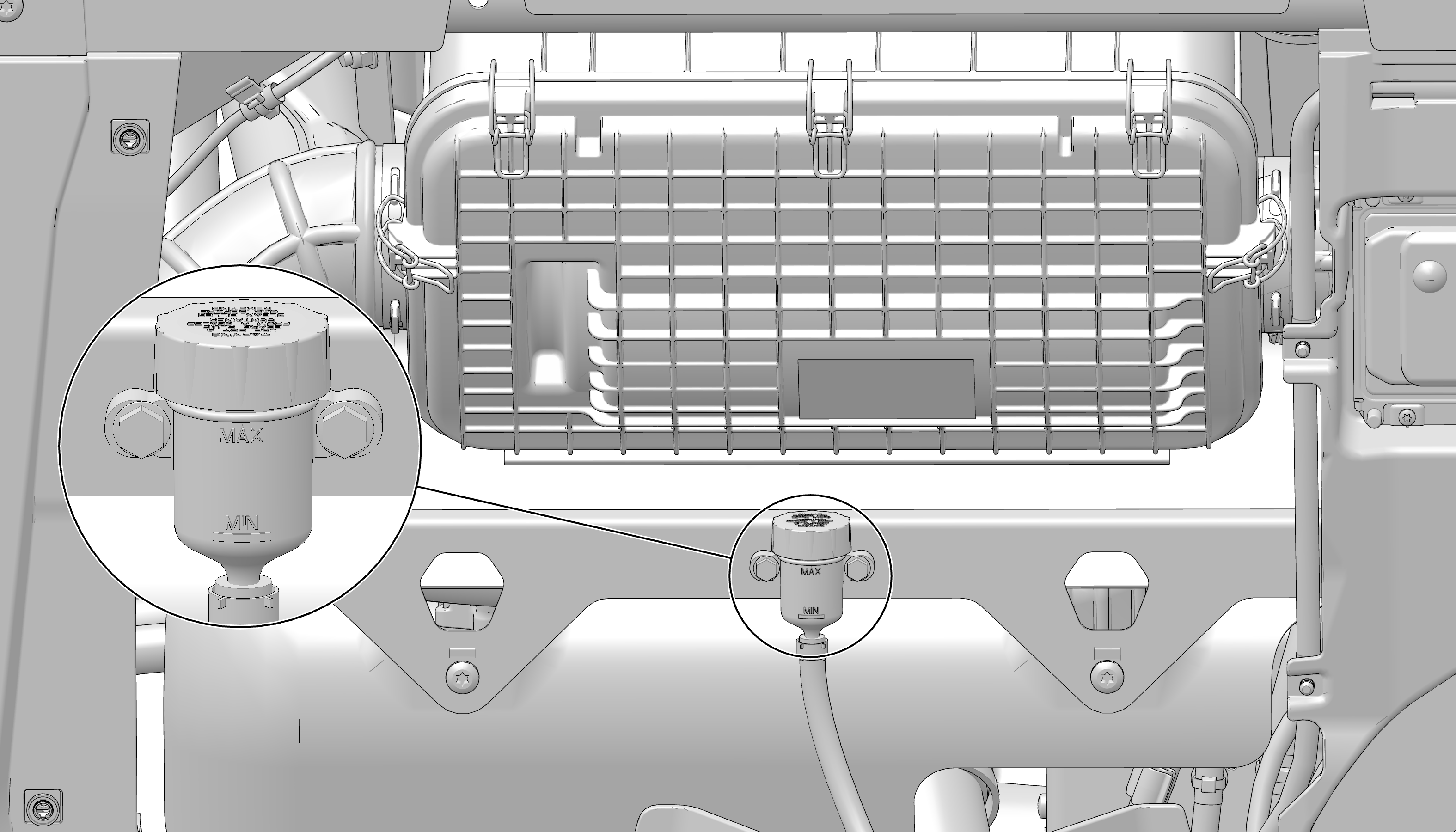Brake Fluid
Inspect the level of the brake fluid before each operation. For TR/ZUG there are two areas where the lever should be checked, see below pictures, If the fluid level is low, add DOT 4 brake fluid only. See the Polaris Products section for part numbers.

Change the brake fluid every two years and any time the fluid becomes contaminated, the fluid level is below the minimum, or if the type and brand of the fluid in the reservoir are unknown.
-
Park the vehicle on a flat, level surface.
-
Make sure the vehicle is in PARK and remove the key.
-
Through the front-left wheel well, inspect the brake fluid level and condition in the master cylinder. Make sure the fluid level is between the minimum (MIN) and maximum (MAX) marks.
-
If the fluid level is low, clean around the master cylinder cap, remove the cap, and add fluid from a new / unopened bottle.
IMPORTANTDo not overfill the brake system reservoir. Overfilling can cause pressure build-up leading to brake drag, system degradation, and brake system failure. -
Apply the brake forcefully for a few seconds and check for fluid leakage around the fittings.
SSB Lever Reservoir
-
Position the vehicle on a level surface.
-
Place the transmission in PARK.
-
Remove rear seats.
-
Turn the 1/4 studs and remove the access panel 1.

-
View the brake fluid level in the reservoir. The level should be between the maximum (MAX) and minimum (MIN) level lines.

-
If the brake fluid level is lower than the lower level line, add fluid to the upper line.
WARNINGDo not overfill the brake fluid reservoir. Overfilling can cause pressure build-up leading to brake drag, system degradation, and brake system failure. -
Apply the brake forcefully for a few seconds and check for fluid leakage around the fittings.
-
Reinstall the rear access panel and turn the 1/4 studs to close.